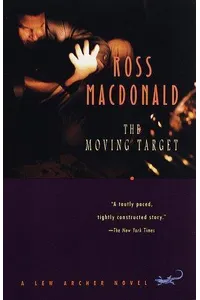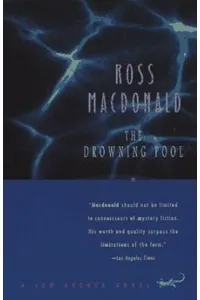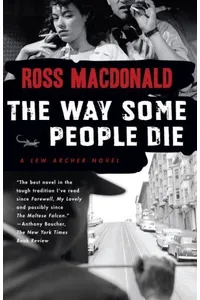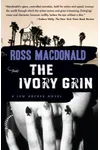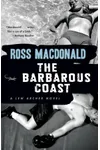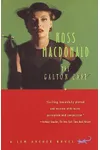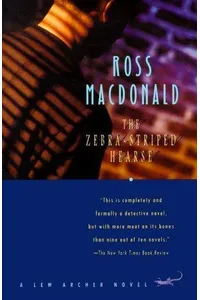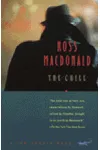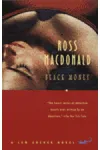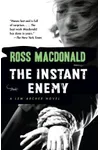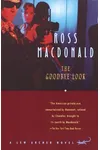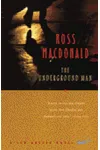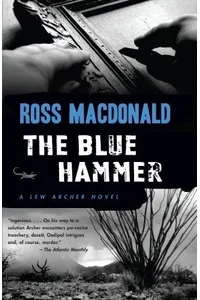Step into the shadowy streets of Southern California, where Lew Archer, the sharp-witted private eye, unravels mysteries that cut deeper than a knife. Created by Ross Macdonald, the Lew Archer series redefined crime fiction with its psychological depth and haunting exploration of human flaws. If you love gritty detective tales with a literary twist, Archer’s world of secrets and betrayal will pull you in!
Unlike the swaggering heroes of classic noir, Archer is a compassionate observer, peeling back layers of family dysfunction and societal decay. Spanning 18 novels from the late 1940s to the 1970s, this series blends hardboiled action with poetic prose, making it a must-read for mystery fans.
How Lew Archer Began
Ross Macdonald, born Kenneth Millar, crafted Lew Archer as a nod to his literary heroes, Dashiell Hammett and Raymond Chandler. The name 'Archer' pays homage to Hammett’s Miles Archer, Sam Spade’s ill-fated partner, while also reflecting Macdonald’s Sagittarius zodiac sign. First appearing in the 1946 short story 'Find the Woman,' Archer debuted in novel form with The Moving Target in 1949, published under the pseudonym John Macdonald to avoid confusion with his wife, mystery writer Margaret Millar.
Inspired by personal struggles, including a turbulent childhood and his daughter’s legal troubles, Macdonald infused Archer with a therapist’s empathy and a detective’s grit. His goal was to elevate the genre, blending Freudian psychology with Greek tragedy to explore the roots of crime, making Archer a unique figure in noir fiction.
The Heart of Lew Archer
The series’ 18 novels, set in the fictional Santa Teresa (a stand-in for Santa Barbara), follow Archer as he navigates the underbelly of California’s elite. Key titles include The Moving Target (1949), where Archer investigates a millionaire’s kidnapping amid greed and betrayal; The Galton Case (1959), a haunting tale of identity and family secrets inspired by the Oedipus myth; The Chill (1964), a masterfully plotted mystery of missing persons and buried truths; and The Underground Man (1971), which tackles environmental ruin alongside a child’s disappearance.
Macdonald’s themes dig into the human psyche—family trauma, generational guilt, and the collision of past and present. His prose sparkles with poetic imagery, transforming gritty investigations into meditations on justice and mercy. Archer, less a hero than a lens, observes California’s shifting culture, from 1950s suburbia to 1960s counterculture, exposing the moral cracks beneath the American Dream.
The series’ style blends the 'whodunit' with psychological thrillers, offering intricate plots that unravel family secrets across generations. Readers are drawn to Archer’s world-weary compassion and Macdonald’s ability to make every case feel like 'all one case,' connecting personal pain to societal flaws.
Why Lew Archer Resonates
Lew Archer’s legacy lies in its transformation of the crime genre. Macdonald’s novels, praised by critics like Eudora Welty and John Leonard, brought literary sophistication to hardboiled fiction, earning him accolades like the Mystery Writers of America’s Grand Master Award. The series inspired films like Harper (1966), starring Paul Newman, and influenced modern crime writers like Michael Connelly and Sue Grafton.
Today, Archer’s introspective sleuthing and Macdonald’s lyrical storytelling continue to captivate readers who crave mysteries with emotional weight. The series’ exploration of universal themes—identity, loss, and redemption—ensures its timeless appeal, making it a hidden gem for new generations of noir enthusiasts.
About Lew Archer
- Publication Span: 1949–1976
- Number of Novels: 18
- Key Awards: Silver Dagger (1964) for The Chill, Grand Master Award (1974)
- Setting: Santa Teresa, a fictionalized Santa Barbara
Ready to crack open a case with Lew Archer? Grab The Moving Target and dive into a world where every mystery reveals a deeper truth!
